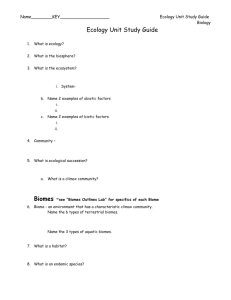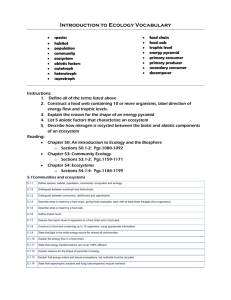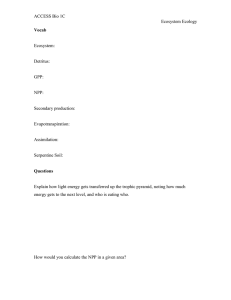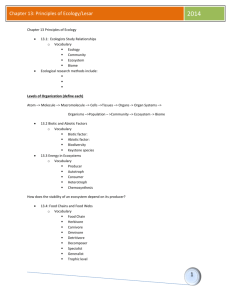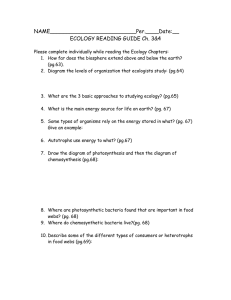AP Biology Ecology Study Questions
advertisement
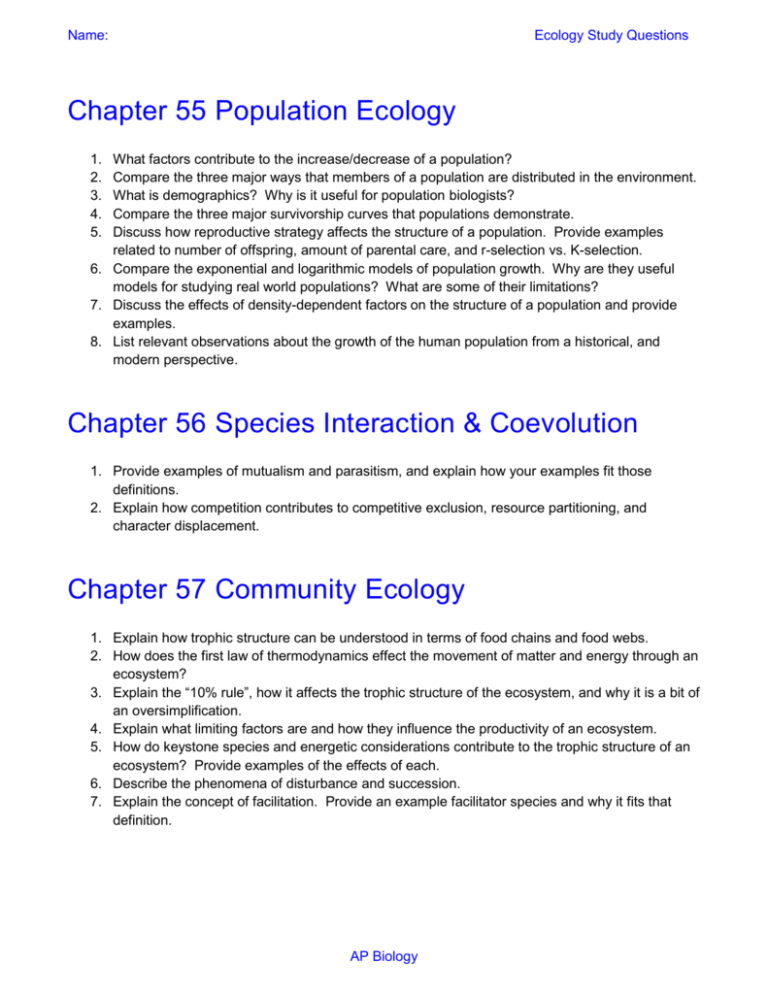
Name: Ecology Study Questions Chapter 55 Population Ecology 1. 2. 3. 4. 5. What factors contribute to the increase/decrease of a population? Compare the three major ways that members of a population are distributed in the environment. What is demographics? Why is it useful for population biologists? Compare the three major survivorship curves that populations demonstrate. Discuss how reproductive strategy affects the structure of a population. Provide examples related to number of offspring, amount of parental care, and r-selection vs. K-selection. 6. Compare the exponential and logarithmic models of population growth. Why are they useful models for studying real world populations? What are some of their limitations? 7. Discuss the effects of density-dependent factors on the structure of a population and provide examples. 8. List relevant observations about the growth of the human population from a historical, and modern perspective. Chapter 56 Species Interaction & Coevolution 1. Provide examples of mutualism and parasitism, and explain how your examples fit those definitions. 2. Explain how competition contributes to competitive exclusion, resource partitioning, and character displacement. Chapter 57 Community Ecology 1. Explain how trophic structure can be understood in terms of food chains and food webs. 2. How does the first law of thermodynamics effect the movement of matter and energy through an ecosystem? 3. Explain the “10% rule”, how it affects the trophic structure of the ecosystem, and why it is a bit of an oversimplification. 4. Explain what limiting factors are and how they influence the productivity of an ecosystem. 5. How do keystone species and energetic considerations contribute to the trophic structure of an ecosystem? Provide examples of the effects of each. 6. Describe the phenomena of disturbance and succession. 7. Explain the concept of facilitation. Provide an example facilitator species and why it fits that definition. AP Biology Name: Ecology Study Questions Chapter 58 Ecosystems & Global Ecology 1. Briefly describe the following biogeochemical cycles: a. water cycle b. carbon cycle c. nitrogen cycle d. phosphorous cycle 2. Explain what all nutrient cycles have in common. 3. Explain the impact of the following disturbances on ecosystems: a. fire b. invasive species c. humans Chapter 59 Conservation Biology 1. What is biodiversity? How is it measured? 2. Explain how humans are affecting earth’s biodiversity and what effect this has on ecosystems. AP Biology



